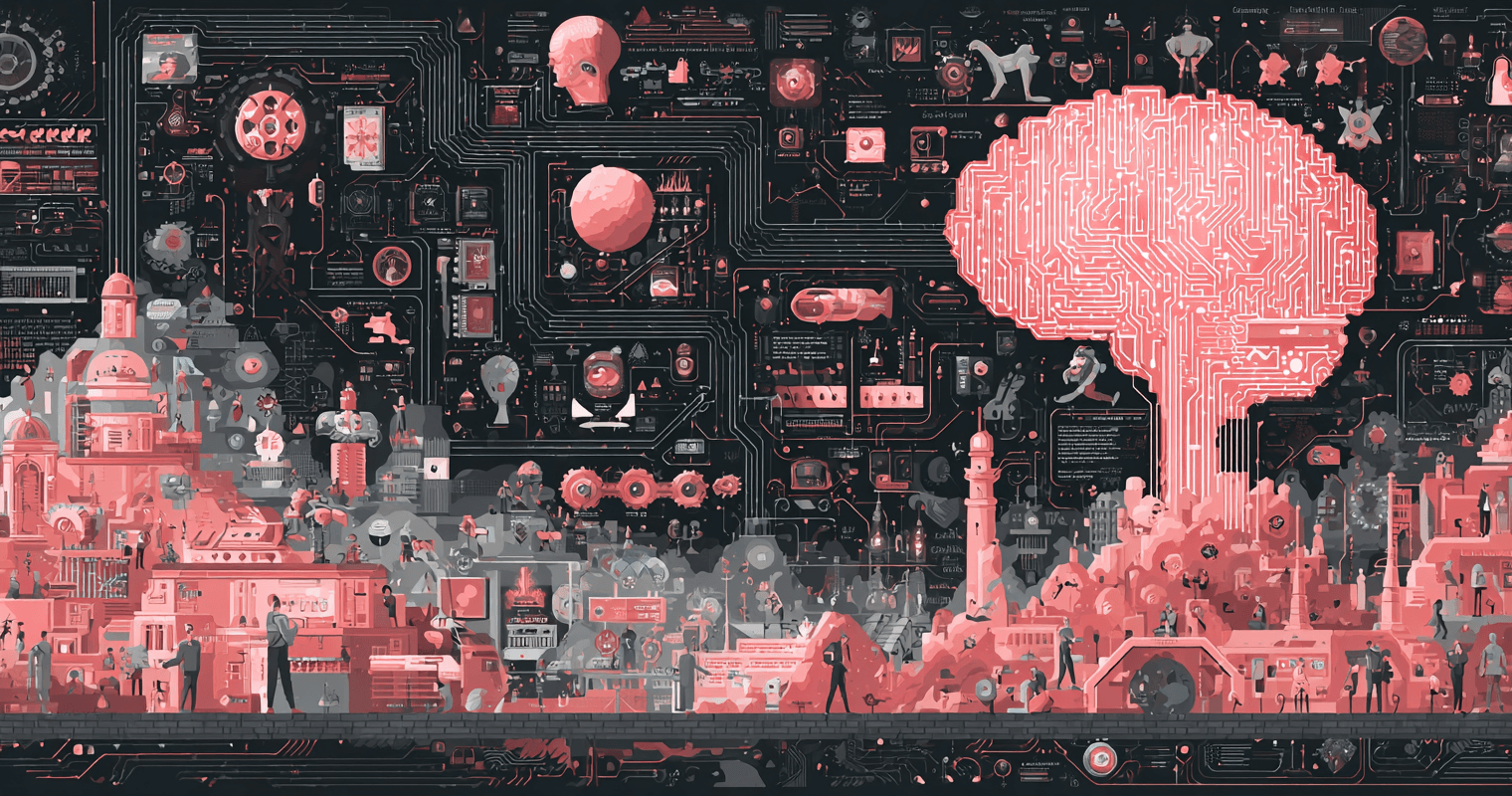
The Cost of Intelligence
To oversimplify the intelligence-to-price ratio… it is getting much, much cheaper to run AI applications.


From March 30 to April 1 in Washington D.C., readers will have the chance to hear from Jeff and a range of other experts like Teeka Tiwari and Jeff Clark… This will be the first time we’ve gotten together since 2019… and we have a lot to catch up on. Now, on to today’s mailbag…

Dear Reader,
Welcome to our weekly mailbag edition of The Bleeding Edge. All week, you submitted your questions about the biggest trends in technology, and today, I’ll do my best to answer them.
If you have a question you’d like answered next week, be sure you submit it right here.
Before turning to this week’s mailbag, I want to mention that the 2022 Legacy Investment Summit is right around the corner…
From March 30 to April 1, readers like you will have the chance to hear from me and a range of other experts like…
World-renowned crypto expert Teeka Tiwari
Former Wall Street veteran Jason Bodner
Warrants guru Dave Forest
Psychedelic therapy expert Mike Zapolin
Master options trader Jeff Clark
TradeSmith CEO Keith Kaplan
Keynote speaker Peter Diamandis, named as one of Fortune’s “World’s 50 Greatest Leaders”
We are all thrilled to be in front of a live audience again, sharing the newest and most exciting ideas in investing.
This will be the first time we’ve gotten together since 2019… and we have a lot to catch up on.
And worth mentioning is that the mayor of D.C. has lifted the mask and proof-of-vaccine mandates. We’re done with all the nonsense of the pandemic policy… It’s time for us to be normal again, smile, and have a great time.
Our in-person tickets are selling fast, so if you’d like to come and have the chance to meet face-to-face in Washington, D.C., please reach out to our Summit support team at 1-888-413-5232 to book a ticket.
And for anyone unable to personally attend, we’ve also arranged virtual tickets so you can participate from the comfort of your own home.
I’d highly encourage Bleeding Edge readers to join me for the 2022 Summit. I promise it will be an exciting time.
Simply go right here or click on the banner below to learn more.
Now let’s turn to today’s mailbag…
Let’s begin with a question on quantum computing and blockchain technology…
I thank you for your excellent work and for sharing your expertise and knowledge of the technical world.
Do you think that quantum computing will affect the blockchain world?
– Mark M.
Hi, Mark, and thanks for the very kind compliments. I do my best to bring complex and important topics to my readers in a way that can be easily understood.
As for your question, this is certainly a hot topic…
Quantum computers will most certainly impact the fields of blockchain, cybersecurity, and cryptography, as well as artificial intelligence.
Quantum computers are capable of operating at speeds exponentially greater than any classical supercomputer on the planet today. And they can tackle complex problems at a massive scale like understanding our global climate, or challenging problems in cosmology.
Quantum computing does pose a threat to blockchain technology. Blockchains are cryptographically secured, and a powerful enough quantum computer could theoretically hack a blockchain.
And if my predictions are correct about how quickly quantum computers are developing, this threat is nearer than most realize.
For some background, a 53-qubit quantum computer has the potential to crack our 256-bit encryption – the current standard for security – in as little as a couple of days. A higher qubit quantum computer could do it even faster.
It isn’t much of a risk today, though, because the current generation of quantum computers is too “noisy” right now. They are not “fault-tolerant” enough to perform such a feat… but they are getting close.
In my 2022 prediction series, I predicted that we will see the world’s first 256-qubit quantum computer announced this year. That caliber of quantum computer could theoretically crack our existing encryption protocols in short order.
The good news is, blockchain technology is software. And like all software, we can upgrade it. That’s one reason why I’m still very bullish about the future of the blockchain industry.
Private companies are currently working on solutions to make blockchains “quantum-proof.”
One blockchain project called Quantum Resistant Ledger has even developed its blockchain technology from the ground up to be quantum-resistant. Other projects are anticipating future changes.
And we’re going to see a lot more work in this area as we get closer to universal fault-tolerant quantum computers.
I’ll be staying on top of these developments in The Bleeding Edge…
Next, a reader wants to know more about the automotive industry…
Jeff, in looking at the increase in the density of semiconductors the automotive industry uses, do you think this could be offset by total automotive sales declining?
Self-driving cars will enable vehicles that people currently utilize 4% of the time to be utilized much more, thus requiring fewer vehicles.
I don’t see this as a short-term issue, but if the tech adoption curve holds for self-driving technology, this could spell trouble for automotive long term. What am I missing?
– Tony S.
Hi, Tony, and thanks for sending in your question.
Your thinking is spot on. It’s just that there are some key variables that we’ll need to factor into our thinking: the timing and the global population. Specifically, we’ll need to consider the global population with the means to either own, rent, or hire a car.
One of the most interesting and misunderstood industry dynamics in the automotive sector is around the shift towards electric vehicles. If we were to ask someone why the shift is happening, most would say that it is driven by the desire to move to clean energy.
It’s a reasonable response, but for us to be well informed, we have to ask, “Where does the electricity come from?”
Most of our electricity comes from carbon-based fuels. After that it comes from nuclear fission, which produces radioactive waste… that’s the energy that goes into an EV. If we aren’t fueling our EVs from our own solar panels, for example, we’re still burning carbon to drive our EVs.
Where the carbon is being emitted is simply displaced – it happens at the power plant rather than the car (in someone else’s back yard).
I mention this because car companies often talk about how they are leading us to a green future. They appear so magnanimous… but that’s just marketing.
The real motivation is that they want to sell more cars. Specifically, they want everyone to replace their internal combustion engine cars/trucks for the EV equivalents.
That’s how they’ll make the most money. And the use of carbon-based fuels and energy that produces radioactive waste will increase (seven to 15% of all electricity is lost during transmission).
This is relevant, because over the course of the next two decades, we will continue to see the large-scale replacement of cars through the adoption of EVs.
The automotive manufacturers have an immense financial incentive to push the industry to make this shift. It isn’t about clean energy; it’s about increasing production. That’s a far stronger motivator for these companies, especially considering the poor financial health that almost all legacy automotive manufacturers are in.
And hopefully, in parallel, we’ll make accelerated progress with clean baseload energy production like nuclear fusion – some forms of which produce zero radioactive waste (the power of the sun).
If we can accomplish this and replace our carbon-based energy production with nuclear fusion, then we can truly have a clean and green future.
As we extend our thinking to Level 4 and Level 5 autonomous driving, we should also recognize that all cars will need to be replaced whether or not they are EVs. These autonomous vehicles are laden with sensors like LIDAR (light detection and ranging), radar, cameras, infrared, etc. that are required for a vehicle to be self-driving.
And they also have a supercomputer, a brain, inside that takes the inputs from the sensors to safely control/drive the vehicle.
In a static population, you’re right. As shared autonomous vehicle (SAV) fleets of cars become available, we will need less of them because utilization will be higher per vehicle.
But we should also consider that not everyone will want to use a shared car, as those that have the means will still want their own self-driving vehicle(s) for their convenience.
Yet as we bring the next 1 billion people out of poverty and they are able to earn enough to buy a car, rent a car, or use autonomous ride-hailing services, clearly demand will increase on a global level.
And unless we experience some catastrophic reduction in population in the coming years, we are going to see some impressive growth in the automotive technology sector – this is part of a big theme I refer to as The Future of Transportation.
Let’s conclude with a question about identity authentication on crypto exchanges…
Dear Jeff, to purchase [a certain cryptocurrency], I must go through crypto.com since I live in the U.S.
In addition to scanning my driver’s license, which is “kind of” fine, I have to enter my social security number when setting up a fiat wallet so that I can deposit money from my bank account.
That is over the top. Why should that be necessary if my ID is already verified?
I should also not need to type in my bank username and password. Could you please explain why these companies ask for social security numbers? I do not feel comfortable providing it and yet wish to purchase some [cryptocurrency]. What can I do? Thanks.
– Gordon E.
Hi, Gordon, and thanks for writing in. The world of cryptocurrencies is certainly complex in ways traditional investors may not be familiar with.
Regarding the request for a social security number, the explanation is straightforward. The crypto industry is adopting similar Know Your Customer (KYC) and Anti-Money Laundering (AML) procedures as your brokerage account.
Cryptocurrency exchanges are regulated – just as equity exchanges are – and are in fact under more stringent regulatory scrutiny as they are new, compared to the well-established equity exchanges.
Typically, KYC/AML requires new customers to provide their date of birth, social security number, and physical address. Some companies may also require photos or videos as part of their verification.
Most cryptocurrency exchanges operate under a geographical jurisdiction, which is the purpose of the driver’s license… it is confirmation of address.
Ultimately, this data confirms a customer is who they say they are and prevents illegal activities like money laundering, tax evasion, and funding terrorism.
And critically, if an exchange doesn’t ask for this information, it could be held liable for illegal activities. So that is why crypto exchanges will typically ask for this information.
As for your second question, the request for your bank username and password is for a different reason. This is done to make it simple to move funds from your bank account to your crypto account. Services like Plaid make this possible.
We’ve discussed Plaid before in these pages. Before Plaid, if we wanted to connect an online account with our bank account, we would have to enter our bank account and routing number. Then the online account would send two small deposits to our bank account within a few days.
We’d have to log back into our bank account, confirm the deposit amounts, then log back into our online account and enter those two deposit amounts.
It was a time-consuming and awkward process that usually took three or four days to complete. This was all just to enable a simple ACH transfer between a bank account and another financial services company like an exchange.
Plaid removes all the complexity from this process. If we want to open an account on a financial services application that uses Plaid, we simply enter in our bank username and password, and in seconds, we have connected our accounts, and the service is ready to use.
But this does mean we must provide our bank account login information to this third-party company. Is it safe?
In general, yes, it is very safe.
When a user types in their bank login information using the Plaid technology, Plaid is not creating an account for the user. The account validation process happens once, and we can think of it as creating a pipe between an application and our bank account. Once the pipe is open, it’s open. And we can use it at any time.
Plaid’s security is excellent… yet hacking is always a risk. So it is critically important to use two-factor authentication (2FA), or even better, multi-factor authentication (MFA).
A simple example of 2FA is when a bank will send a code via text message to our phone and then we have to enter in our code before we can log in to our account.
Having 2FA or MFA is so important that I won’t sign up for any financial services account that doesn’t use this technology. In this way, even if there were to be a data breach at Plaid, our accounts are still protected.
I hope this helps you understand this process a bit better. While some of these “extra” steps might seem like a hassle, the rewards of gaining some exposure to this trend are definitely worth it.
Blockchain technology and cryptocurrency are revamping the ways we finance, transact, and interact with others.
And if anyone wants to receive my guidance to walk you through how to get started, please check out my recent presentation for more details.
That’s all we have time for this week. If you have a question for a future mailbag, you can send it to me right here.
Have a good weekend.
Regards,
Jeff Brown
Editor, The Bleeding Edge
P.S. This Wednesday night, I shared all my thoughts on the recent market action… and a hot new technology trend that is running strong despite the volatility.
If you weren’t able to attend the night of, then please don’t miss your chance to catch the replay. I even gave away the name and ticker of a company that needs to be on your radar in 2022.
To watch now, simply go right here.
Like what you’re reading? Send your thoughts to feedback@brownstoneresearch.com.

Read the latest insights from the world of high technology.

To oversimplify the intelligence-to-price ratio… it is getting much, much cheaper to run AI applications.


Last week, Disney and OpenAI agreed to a three-year licensing agreement...